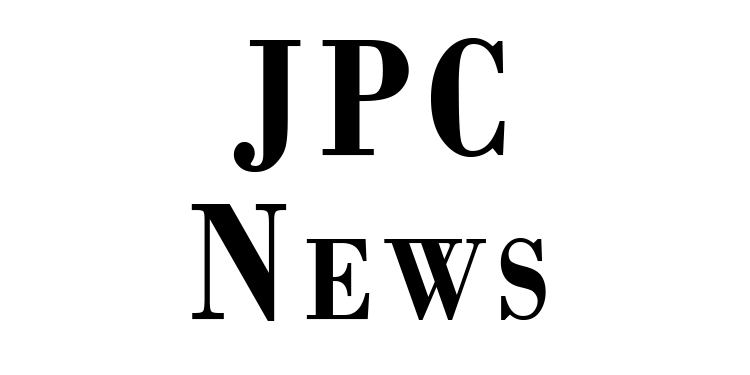Table of Contents
– What are the challenges of integrating indigenous knowledge with modern science?
Learn about the reasons behind the abandonment of efforts to combine indigenous knowledge with modern science. Explore what went wrong and how we can move forward in a more inclusive way.
What Went Wrong: National Academies Abandon Efforts to Combine Indigenous Knowledge with Modern Science
In recent years, there has been a growing recognition of the need to integrate indigenous knowledge with modern science. Indigenous knowledge, which is the knowledge, innovations, and practices of indigenous peoples, has been proven to provide valuable insights into various areas such as environmental conservation, sustainable development, and traditional medicine. However, despite the potential benefits of combining indigenous knowledge with modern science, efforts to do so have faced numerous challenges.
Background
The National Academies, which include the National Academy of Sciences, the National Academy of Engineering, and the National Academy of Medicine, have long been at the forefront of efforts to bridge the gap between indigenous knowledge and modern science. These institutions have recognized the importance of incorporating diverse perspectives and knowledge systems into scientific research and policy-making processes.
Challenges Faced
Despite the good intentions, the efforts to combine indigenous knowledge with modern science have encountered several challenges, including:
- Lack of understanding and respect for indigenous knowledge
- Power imbalances between indigenous communities and scientific institutions
- Difficulties in communication and collaboration
- Lack of institutional support and funding for integration efforts
Lack of Understanding and Respect for Indigenous Knowledge
One of the main challenges has been the lack of understanding and respect for indigenous knowledge within scientific institutions. Traditional scientific paradigms often prioritize Western scientific methods and overlook the rich knowledge systems of indigenous cultures. This has led to the marginalization and exclusion of indigenous knowledge from mainstream scientific discourse.
Power Imbalances
The power imbalances between indigenous communities and scientific institutions have also posed significant challenges. Indigenous peoples have historically been disenfranchised and marginalized, leading to unequal power dynamics in research and policy-making processes. This has made it difficult for indigenous knowledge to be valued and integrated on an equal footing with modern science.
Communication and Collaboration
Communication and collaboration between indigenous communities and scientific institutions have often been fraught with challenges. Language barriers, cultural differences, and differing worldviews have made it difficult to establish meaningful partnerships and engage in productive dialogue. As a result, many efforts to combine indigenous knowledge with modern science have stalled or been ineffective.
Lack of Institutional Support and Funding
Furthermore, the lack of institutional support and funding for integration efforts has hindered progress in this area. Scientific institutions and funding agencies have not always prioritized the integration of indigenous knowledge, leading to limited resources and support for initiatives that seek to combine indigenous knowledge with modern science.
Implications
The challenges faced in efforts to combine indigenous knowledge with modern science have significant implications for research, policy-making, and the well-being of indigenous communities. These implications include:
- Loss of valuable knowledge and insights
- Continued marginalization of indigenous communities
- Missed opportunities for sustainable development and environmental conservation
- Underrepresentation of diverse perspectives in scientific research
Loss of Valuable Knowledge and Insights
By marginalizing indigenous knowledge, we risk losing valuable knowledge and insights that could contribute to addressing pressing global challenges such as climate change, biodiversity loss, and public health crises. Indigenous knowledge has been accumulated over generations and offers unique perspectives and solutions to complex problems.
Continued Marginalization
The exclusion of indigenous knowledge from scientific discourse perpetuates the marginalization of indigenous communities. It reinforces unequal power dynamics and denies indigenous peoples the opportunity to have their voices heard and their knowledge appreciated and respected.
Missed Opportunities for Sustainable Development and Environmental Conservation
Integrating indigenous knowledge with modern science holds great potential for advancing sustainable development and environmental conservation efforts. Indigenous peoples have a deep understanding of the natural world and have developed sustainable practices that can inform and enhance modern scientific approaches to environmental stewardship.
Underrepresentation of Diverse Perspectives
Without the integration of indigenous knowledge, scientific research and policy-making processes continue to be limited by an underrepresentation of diverse perspectives. Embracing diverse knowledge systems and worldviews is essential for addressing complex and multifaceted challenges facing society.
Moving Forward
While the challenges in combining indigenous knowledge with modern science are significant, there are steps that can be taken to move forward in a more inclusive and equitable way. These steps include:
- Increasing awareness and recognition of indigenous knowledge
- Fostering genuine partnerships and collaboration
- Providing institutional support and funding for integration efforts
- Building capacity within scientific institutions to engage with indigenous knowledge
Increasing Awareness and Recognition
It is crucial to increase awareness and recognition of the value of indigenous knowledge within scientific institutions and society as a whole. This includes acknowledging the contributions of indigenous knowledge to our understanding of the natural world and recognizing its potential to inform and enrich modern scientific endeavors.
Fostering Genuine Partnerships and Collaboration
Genuine partnerships and collaboration between indigenous communities and scientific institutions are essential for successfully combining indigenous knowledge with modern science. This requires mutual respect, trust, and a commitment to meaningful engagement that values the unique perspectives and contributions of indigenous peoples.
Providing Institutional Support and Funding
Scientific institutions and funding agencies must prioritize the integration of indigenous knowledge and provide the necessary support and funding for integration efforts. This includes creating dedicated funding streams for research that combines indigenous knowledge with modern science and establishing institutional mechanisms to support such initiatives.
Building Capacity Within Scientific Institutions
Scientific institutions need to build their capacity to engage with indigenous knowledge in a meaningful and respectful way. This includes investing in training and education for researchers, establishing guidelines and principles for integrating indigenous knowledge, and creating spaces for indigenous voices to be heard within scientific institutions.
Conclusion
The abandonment of efforts to combine indigenous knowledge with modern science by the National Academies highlights the challenges and implications of overlooking indigenous knowledge in scientific research and policy-making. In order to move forward in a more inclusive and equitable way, it is essential to recognize the value of indigenous knowledge, foster genuine partnerships and collaboration, provide institutional support and funding, and build capacity within scientific institutions. By embracing diverse knowledge systems and worldviews, we can work towards addressing complex challenges and advancing sustainable, just, and inclusive development.
Last October, I wrote a review of the National Science Foundation’s (NSF) new initiative, known as an attempt to blend indigenous knowledge with modern science, which took place in the United States with a budget of $30 million. The NSF was very optimistic about this endeavor, but my concern at the time was that the project aimed to unite indigenous and modern knowledge with the objective of promoting equity among researchers. In my opinion, there should be a focus on using funds to train indigenous youth in STEM subjects, fostering equal opportunities for them to pursue science careers and ensuring that there is no prejudice against them. I believe that investing in education rather than cultures would be a more effective approach as it would lead to long-lasting and self-sustaining outcomes.
Unbeknownst to me, a similar project, referred to as “braiding”, was being attempted by another funding group, the U.S. National Academies of Sciences, Engineering, and Medicine (NASEM), with a significantly lower funding allocation of $2 million. Despite my unfamiliarity with the NSF project’s outcome, the NASEM’s effort turned out to be short-lived due to several reasons.
The initial purpose of the project, led by NASEM, was to explore coproduction, the process of jointly creating and sharing knowledge between scientists, Indigenous community members, and other scientific stakeholders in a way that acknowledges diverse perspectives. It was disclosed that the study wasn’t intended to be coproduced, despite the panel’s initial desire to use this concept. Eventually, internal differences led to the collapse of the project. Notably, the study faced criticism for being exclusive and not allowing equitable participation by indigenous partners, prompting a call for the project to be “paused” to address the issues and involve indigenous people more effectively.
The project also faced challenges due to a controversy over the choice of venue for a second workshop, as NASEM leaders deemed the venue inappropriate. The tensions eventually led to the disbandment of the entire project by NASEM and the expulsion of some committee members, ultimately resulting in a significant failure.
I believe that the failure of these projects is due to the inherent differences between indigenous and modern scientific knowledge. While indigenous knowledge is valuable, practical, and based on localized experiences, it does not encompass the extensive empirical knowledge found in the fields of modern science. I also assert that the discussions surrounding these projects reflect an attempt to address power dynamics, often resulting in conflicts over whose voices are heard. It is clear that indigenous knowledge cannot be considered equal in prominence or importance to modern science and attempting to force this equality creates challenges. Therefore, I believe it is necessary to have an open discussion about the role of indigenous science versus modern science in addressing global challenges like climate change and infectious disease outbreaks.
H/t Jon






